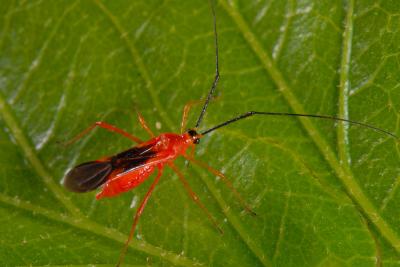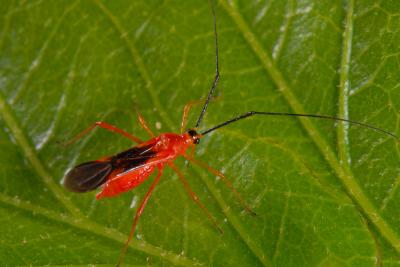Featured Photo

Other Photos


feaured_photo_co
F. Haas, icipe
Is this a Minor Pest?
Yes
Minor Pest Title
Helopeltis bugs (<i>Helopeltis schoutedeni </i>and <i>H. anacardii</i>)
Minor Pest Description
Other bugs feeding on cotton include Helopeltis bugs, blue bugs and cotton lygus and the cotton seed bug.
Cotton Helopeltis (Helopeltis schoutedeni)
Helopeltis bugs are up to 10 mm long and have very long antennae. They are bright red (females) or yellowish-red (males) in colour. The bugs prefer to feed on young plant tissue of leaves, shoots, peduncles and petioles. The toxic saliva injected during sucking causes pale brown necrotic patches. The leaves and the stems of the plants are twisted. The lesions on the leaves often drop out leaving holes as if attacked by chewing insects. The green boll wall is also attacked showing dark, circular, sunken lesion.
Minor Pest What to do.
- Bugs, in particular adults are difficult to control since they can readily move from neighbouring crops or wild plants into the cotton crop.
- Do not interplant cotton with crops that are host for Helopeltis bugs, such as cashew, tea, sweet potato, guava and mango.
- Monitor the crop regularly. Helopeltis attack occurs very suddenly and great vigilance is very important to control this pest, particularly during the rainy season or when water is available leading to flushing (production of young shoots) when Helopeltis populations normally build up.
- Natural enemies are important in the control of bugs. Conserve natural enemies. Weaver ants build nests on cashew trees providing good protection against this and other bug pests. The most important are parasitic wasps attacking bug eggs; ants, which feed on eggs and nymphs; and various predacious bugs, spiders, birds and parasitic flies.
- Neem products reportedly reduce feeding by some bugs.
- Since bugs are late season pests early sowing and picking are recommended to reduce bug attack.
Minor Pest Position
10
Minor Pest Firstcontent
135
Pest Type
insect
Host Plants
Cotton (Revised)
Featured Image
PH Pests Media Gallery
